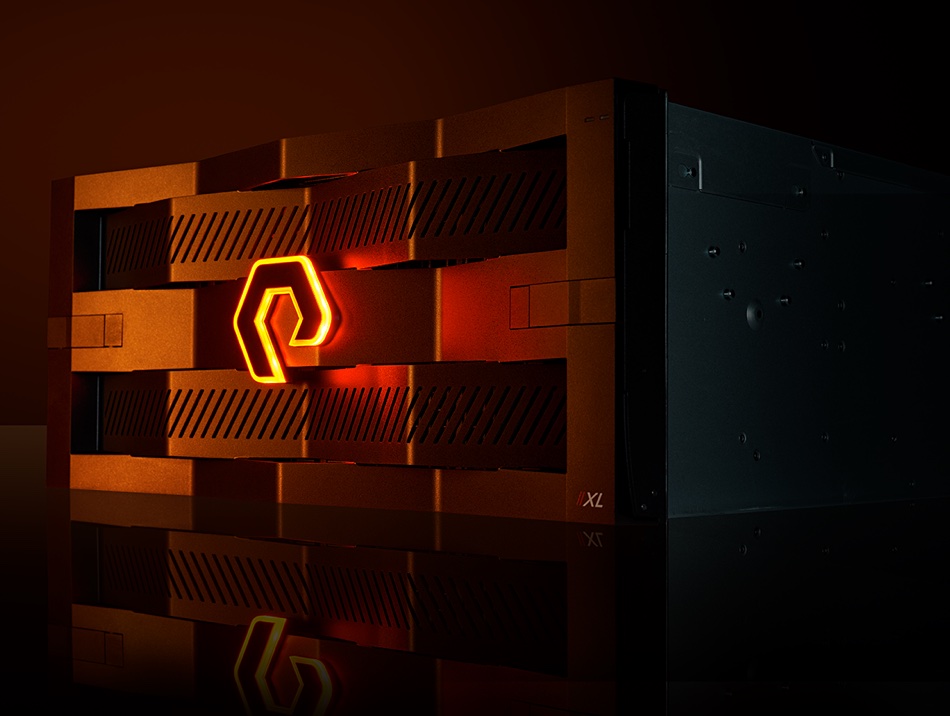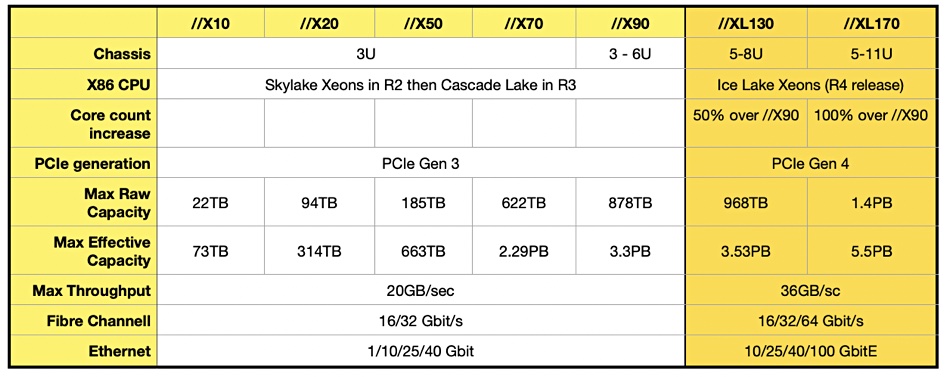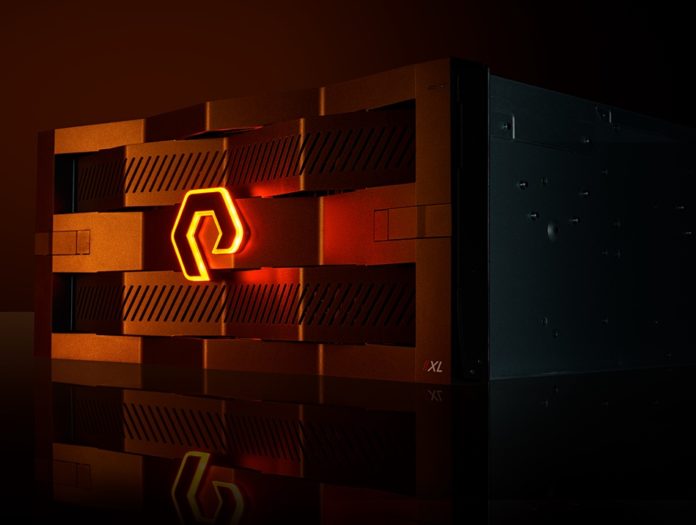Pure Storage has added Ice Lake Xeon grunt to two new high-end FlashArray models built with TLC (3bits/cell) NAND and the PCIe 4 bus, overall delivering up to 80 per cent more throughput than the current top end //X90 FlashArray.
Updated. 10 Dec 2021. Table corrected to show chassis RU sizes for//X90. QLC flash mention removed.
There are two new models — the //XL130 and //XL170 — both with a 5RU base chassis, smaller than the //X90’s 6U enclosure (see note 1 below). They have up to 68 per cent more capacity than the //X90, up to 68 per cent more performance, near-80 per cent more IOPS, and 20 per cent better rack density. A Pure announcement said they have been designed for mission-critical, platinum-tier enterprise applications, from massive databases to containerised and cloud-native apps.
Shawn Hansen, VP and GM, FlashArray at Pure Storage, said: “FlashArray//XL is a clear shot across the bow of legacy storage vendors by combining high-end scale of a true enterprise-class array with the scale-out agility of the cloud operating model.”

Pure Storage has recently emphasised its software credentials and focus, but the //XL models shows that its proprietary hardware roots are flourishing. Commenting on the new models, Pure’s International CTO Alex McMullan said: “The hardware team is still ruthlessly excellent at what they do.”
A table compares the new and existing FlashArray products:

McMullan wouldn’t supply IOPS numbers or Xeon core counts for the new models but gave a percentage core count increase relative to the //X90: 50 per cent for the XL130 and 100 per cent for the XL170. The new models perform faster, helped by the PCIe 4 bus — twice as fast as PCIe 3 — with 18 slots compared to the //X90’s 12x PCIe 3 slots. That’s a 50 per cent increase in PCIe slot numbers plus a doubling in PCIe speed.
The XL models have portions of SLC NAND amongst the TLC flash, and these negate any need for separate NVRAM modules. In effect, the Direct Flash modules, with these SLC sections, have distributed on-board NVRAM.
All in all, this is significantly enhanced hardware — in compute performance, in capacity and in throughput. The //XL130 and 170, like the//X90, have latency as low as 150μs and Pure says they can be used for the most-demanding, mission-critical workloads, such as ones using SAP/HANA, Oracle, SQL Server and VMware.
A Pure storage cluster can now handle more work in fewer racks, saving electrical energy needed for power and cooling, and the Pure Fusion control plane provides a public cloud-like operating model on top of that.
There are Standard, Performance, Premium and Ultra storage classes in Pure Fusion, with the existing FlashArray//X models placed in the Performance, Premium and Ultra classes and FlashArray//XL only in the Ultra class:

Even the power supplies have been upgraded, with four of them in a N+2 configuration rather than the previous N+1 arrangement.
Asked if Dell EMC’s PowerMax was the main competitor for the new models, McMullan demurred. “There’s no primary competitor right now,” he said, adding: “FlashArray//XL moves beyond PowerMax in terms of manageability.”
Purity software upgrade
A new release of the Purity operating software, v6.2, has SafeMode set as the default, meaning always-on data protection. SafeMode provides settable 24- hour to 30-day retention periods for snapshots of volumes, Pods, Protection Groups and files. The eradication timer, used to set a limit for retention, is now tamper-proof.
Specific volumes and volume groups can be pinned in the DMM (DirectMemory Module) cache, an Optane SSD cache, and up to 6TB of DMM capacity is supported. The software can support twice as many vVOLs with the //XL models as the //X90 and there is a higher volume count. In fact the vVols and volume increases in Purity 6.2 apply to all //X and //XL models. Replication performance is boosted by 50 per cent over the //X90 with the XL models. When ActiveDR is ongoing, app performance can be prioritised over replication tasks.
The FlashArray//XL products are available now.
Note 1. The //X90 is 3U by itself, and only grows to 6U with one expansion shelf. So the comparable //XL130 is 8U.








